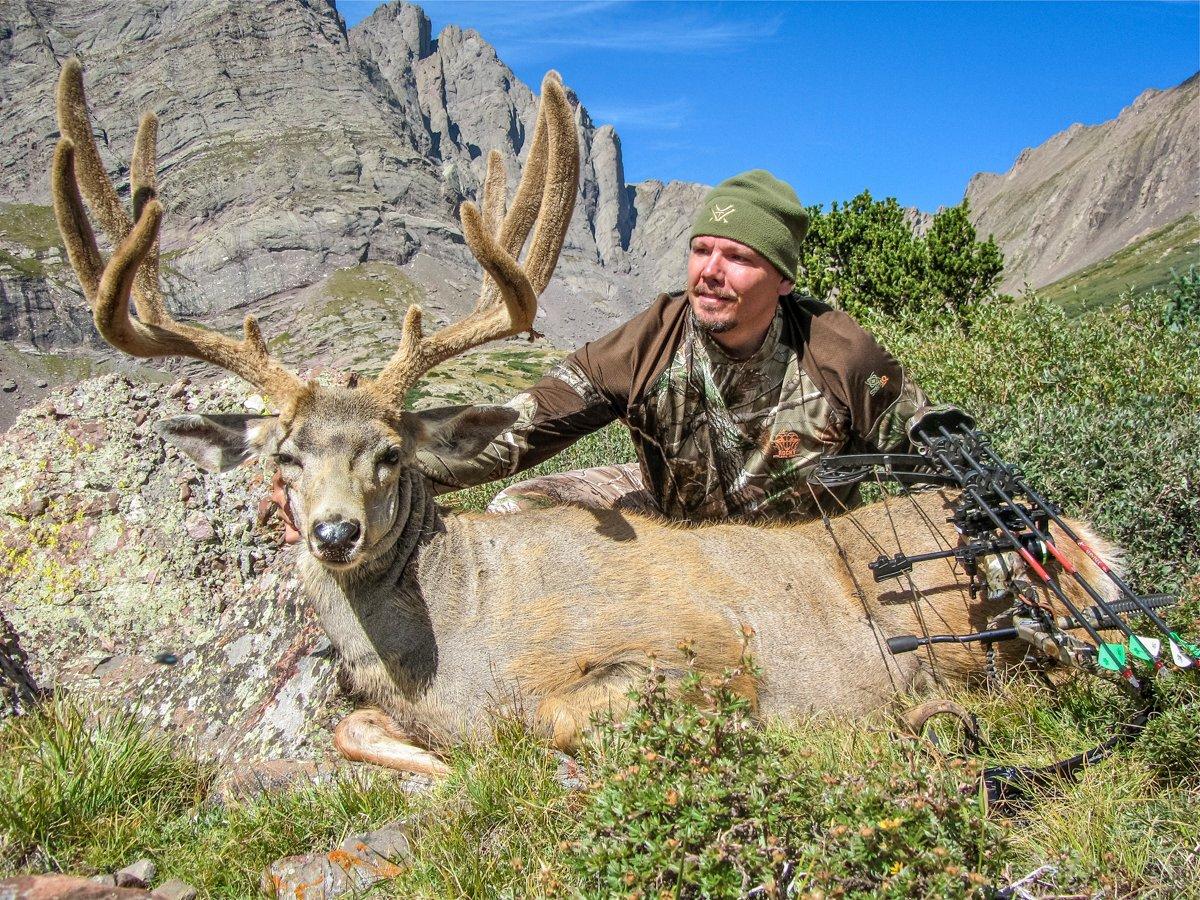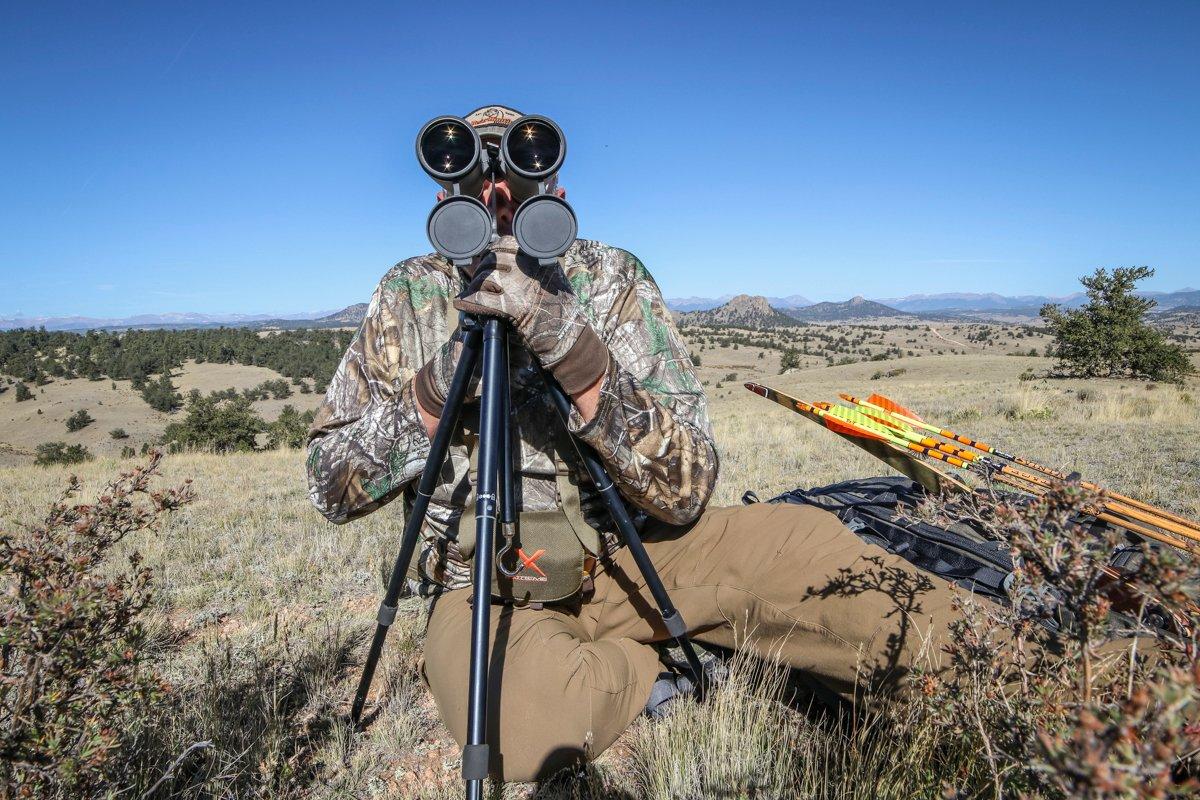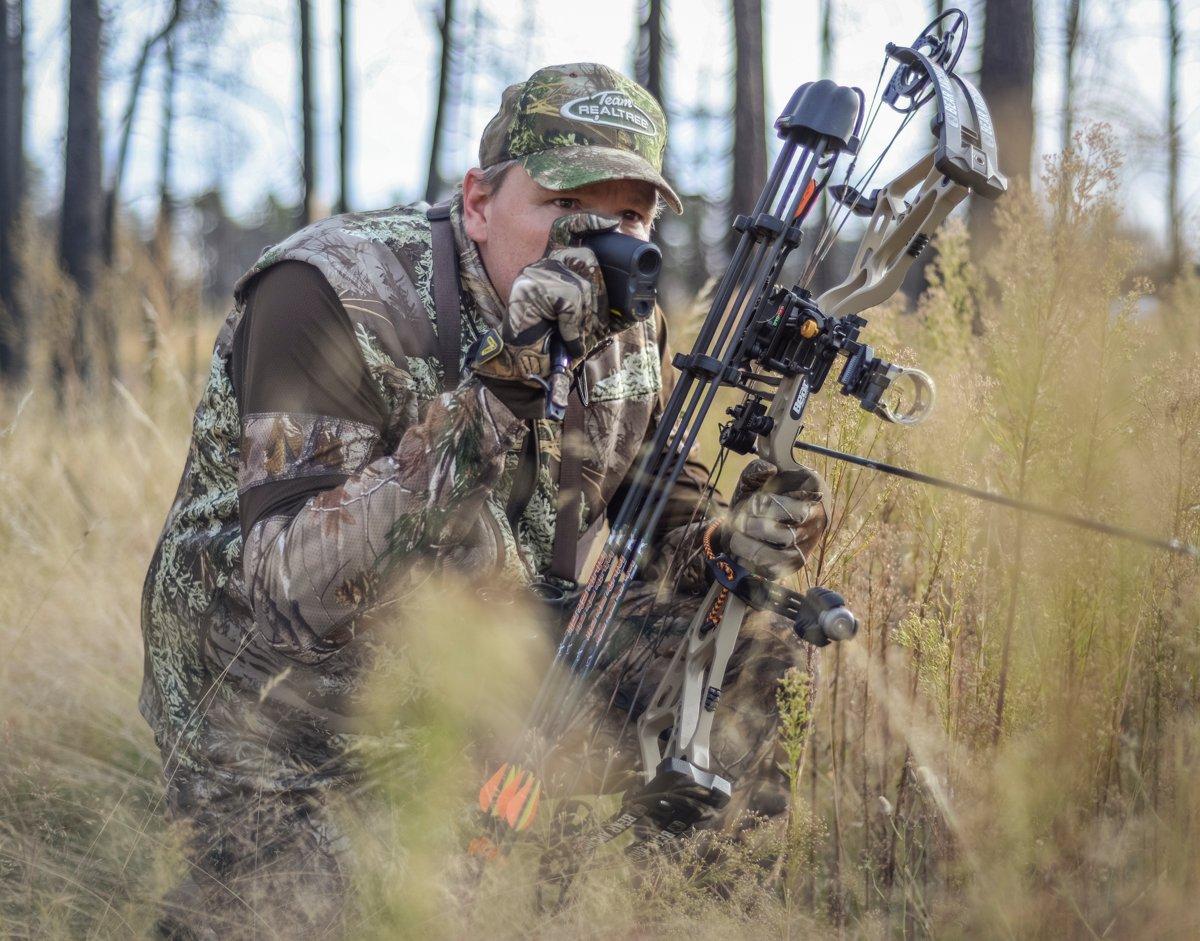Don't wing it, and don't wait. If you want to kill a big mountain buck, you have to start preparing now
Even from a distance I could tell he was the kind of buck I was looking for. His velvet-wrapped 4X4 rack carried deep forks and heavy beams. I would have considered myself lucky just to get close enough for a shot, let alone slip an arrow through his ribs. Even if I did manage to kill him, it would be a 4-mile pack to get him to the truck, but when you're chasing mountain mule deer, there's a physical aspect that must be embraced.
When I'd found the deer the day before, I'd desperately wanted to sneak into range then and there. Mother Nature, however, forced other plans. Dark clouds and fickle winds rushed in unannounced. Backing out, I kept tabs on him the rest of the day with hopes of another opportunity. During the early season, mule deer tend to keep the same daily routine if left undisturbed. This one followed the plan.
Just like he'd done the previous day, the buck fed toward and eventually bedded in the same brushy thicket with other deer. With the deer bedded relatively close to each other, I watched them for the next couple of hours as I waited on the mountain thermals to steady. I studied every detail from my rocky perch. When it comes to planning a stalk, it's all about the details. With my route meticulously planned, I got moving.
Early Opportunity
I love bowhunting mule deer, but I especially love hunting them during the early season. There's just something about those fuzzy antlers. Early season hunts often end up being a year-long chess match of sorts: researching and scouting an area before finding, patterning, stalking and ultimately killing the buck you're after. It's a long road with bumps, pit stops and challenges. But the reward of finally tagging a buck makes the experience rewarding.
Anyone can get lucky. But when it comes to hunting mule deer, that luck comes after hard work, skill and determination. That's why there are several factors that contribute to consistent early season success - especially for non-residents who require extra planning.
It all starts with compiling data on a potential hunting spot. Deer population densities. Hunter numbers. Success rates. Type of terrain. State agencies can and will provide this data, and much more. You should also find out where the biggest mule deer are being killed, since that's generally one indication of properly managed areas. And according to Boone and Crockett's record-book mule deer entries, the top states are, in descending order, Colorado, Utah, Idaho, Wyoming and Nevada. New Mexico and Arizona fall to No. 6 and 7, respectively. All-time entries rank slightly differently, with Colorado, Idaho, Utah, Wyoming and New Mexico taking the top five spots.
Selecting a state isn't easy. It's certainly about more than just trophy potential - Montana is a popular destination and it doesn't even make the big-buck list. There's much to consider, for sure, such as draw units vs. over-the-counter (OTC) tags. This is something you must analyze on your own. Some of the most premiere mule deer units take 10, 15 or 20-plus years to draw. And for almost all draw units (regardless of wait times), tag applications and/or preference point deadlines will soon be here.
But many hunters can't - or don't want to - wait that long. For those folks, OTC or leftover tag options are the best route. Certain areas of Colorado, Montana and New Mexico, among others, are friendliest to the mule deer hunter without any preference points.
Once a state and unit(s) have been selected for further inspection, call people who can provide information on local public properties. Wildlife agency biologists, land managers, game wardens and others are a wealth of information in making location-based scouting and hunting decisions. Even cooks at local diners and auto mechanics down the road from popular destinations will likely have stories to tell and information to share. The more you dig, the more you unearth. Keep detailed notes throughout the process.
Finally, take advantage of useful maps. State game agencies publish valuable visual information on almost everything you can think of. Compare those with other resources such as onX Hunt, and you're well on your way to pinpointing a few spots to focus on once you get there.
Old-School Scouting
Even in the digital age, boots-on-the-ground scouting is still important. If possible, take two scouting trips before you begin hunting. The first one should take place in late spring or early summer. Deer patterns and home ranges will be different at this time, but this trip is more about taking a high-level look at the properties you've compiled digitally. Pair your scouting intel with in-the-field notes to narrow it down from here. Have hunt locations A, B and C for when you return.
While there, travel to local diners, hunting stores and other areas that might harbor people with valuable information. Strike up conversations. Ask them about the areas. Most people are willing to help if you aren't too proud to ask. You'll be glad you did upon returning home with loads of solid leads and intel.
Next, throughout summer, stay in touch with the contacts you've established so far. You never know. Conditions could change before you return. Wildfires, landslides, changes in public lands and an array of other things can alter the outcome. It pays to keep tabs.
Then, schedule at least three to four days to scout just prior to the hunt. This is just as important as the previous trip. Once you're in the field, leave casual scouting techniques at home if you want to find quality bucks. This means going early and staying late. Hike in the dark so when you get to where you want to hunt, it's prime time for buck movement. Don't scout close to roads, either. Although quality bucks can be found in these areas, chances are someone else has already seen them, too. Ideally, getting at least 3 miles from the nearest road is a good start, and doing so will eliminate the vast majority of hunters.
A good mule deer hunter spends far more time behind good optics than actually hunting. When you find areas that look promising, pick them apart by grid searching every nook and cranny. And although it adds a little more weight to your pack, use a tripod. Glassing with one will greatly improve your chances at locating bucks.
Once you find these buck-holding areas, scout from a distance and learn their habits. Spend as much time as you can afford nailing him down. Get to know his routine, even if it's only for a day or two.
Move in for the Kill
Without question, patience is perhaps the most critical element when stalking a mature mule deer buck. Ideally, you should only move in on a buck when the situation is perfect. Pay particular attention to wind direction, the buck's position, available cover, potential shot opportunities, and perhaps the most overlooked, other deer bedded near your target that can spoil an opportunity. This has cost me more opportunities than anything else.
When waiting for that perfect chance to unfold, keep your distance. Generally speaking, watching a buck from 400 to 500 yards away is close enough to move in when needed, but far enough to back out undetected as well. Going unnoticed is another element to a successful mule deer hunt. Bump him and he might be gone for good. But leaving him alone when the time isn't right will almost certainly ensure future opportunities.
When everything is right and it's time to start moving in, be meticulous in your approach, especially once you reach the 100-yard mark. These big bucks are experts at surviving, and they are sensitive to their immediate surroundings. Think you're moving slow enough? Move even slower. Getting to within 40 to 60 yards of a bedded buck is ideal, but getting much closer significantly increases your chance of being detected.
Making the Shot
Making the shot is really where the rubber meets the road. With the average shot being around 50 yards for the mule deer bowhunter, consistently hitting the 10-ring at such distances is important. Uphill, downhill and sidehill shots are obviously factors as well, and although today's angle-compensating rangefinders have eliminated the guesswork for the horizontal distance, you still have to send the arrow. Just because you know the correct pin to use doesn't mean it's a slam dunk when elevation is involved. Practice every angle you could potentially face. And do so well before game day.
Lastly, remember that time and dedication are critical to a successful early season hunt. Mature bucks don't live in every drainage, and it takes an enormous amount of time, dedication and energy to locate the buck you want. Success with these types of hunts rarely comes easily. In fact, I can only remember one time that I found success on the first day. Most of the time, I ended up spending more time watching and waiting for an opportunity than actually hunting. Although this often stretched the hunt longer than anticipated, it generally paid off in the end.
Back to My Buck
With the wind steady and terrain favorable, I slipped in without a hitch. The buck's thick, fuzzy antlers rose above the brush and began moving my direction nearly an hour later. I adjusted my position. Time slowed to a snail's pace as I watched him ease toward a boulder-sized hole in the brush, and when his chest appeared, I went into auto pilot and drew my bow.
Arrows always seem to fly faster in the thin mountain air, and when it buried fletch-deep and smashed into his opposite shoulder, I knew the hunt was over. I watched him bound away in the opposite direction and tip over within sight, and couldn't believe my good fortune. It rarely comes easy when bowhunting alpine bucks, and this hunt was no different. The physical and mental aspects of the hunt are intensified above the timberline. That's what makes the whole experience all the sweeter.
Don't Miss: 5 Tips for Bowhunting Desert Mule Deer
Check out more stories, videos and educational how-to's on big game hunting.











